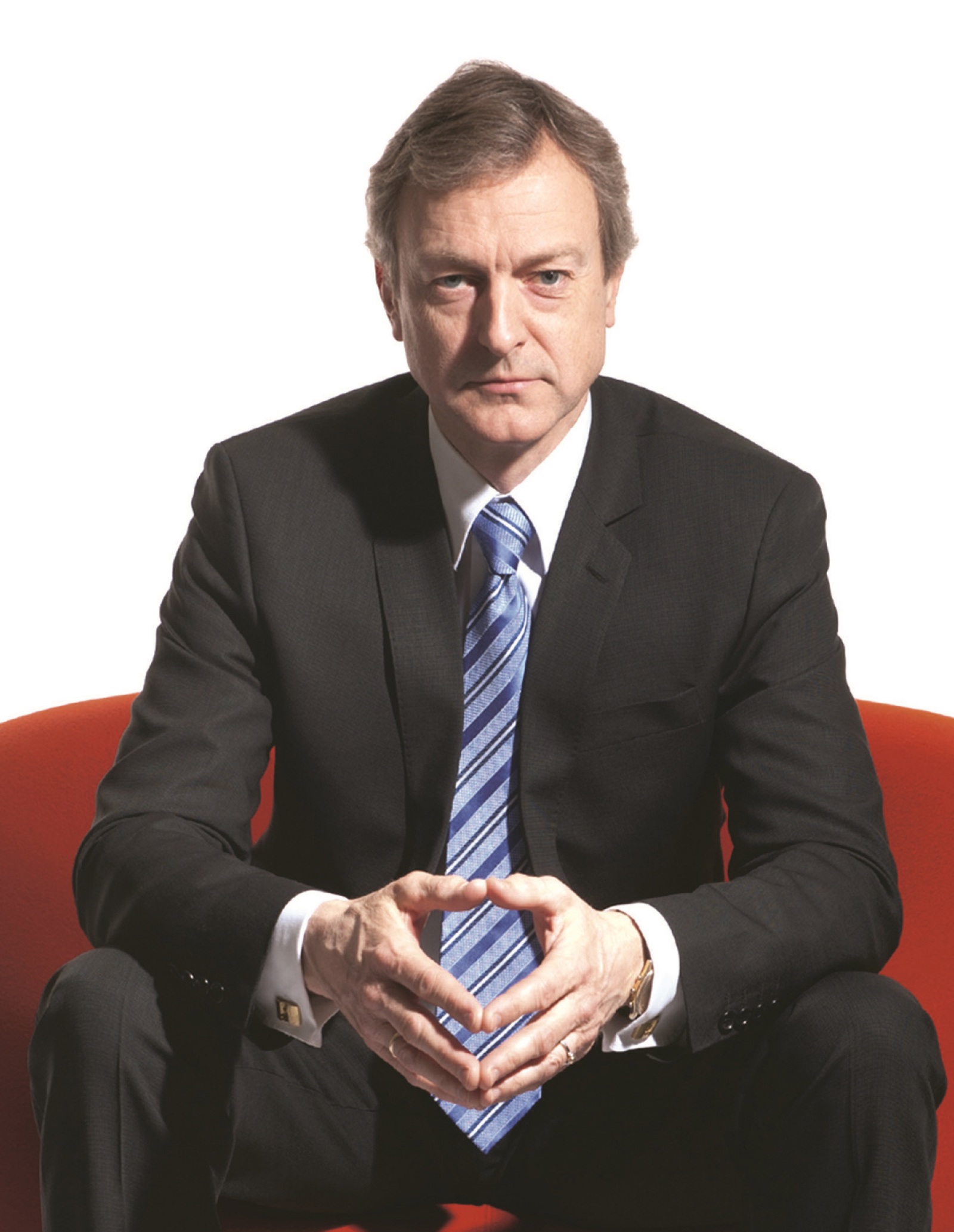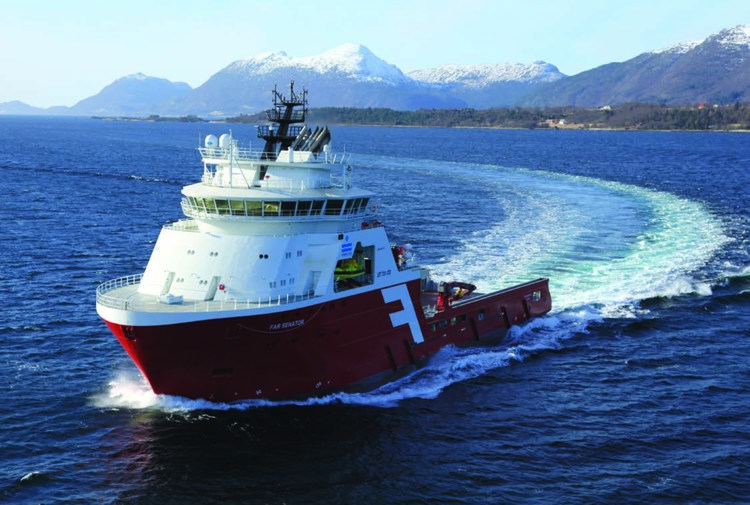
Farstad pulls no punches with high- end offshore strategy
Farstad Shipping delivers and operates in a highly competitive industry where requirements for technology and advanced solutions require a constant focus on further development and innovation.
-
Text:Kongsberg Maritime Communication
-
Gunvor Hatling MidtbøVice President, Communications
“There is no stairway to heaven,” remarks Karl-Johan Bakken, the steely Chief Executive of Farstad Shipping ASA, one of the world’s largest owners of sophisticated offshore service vessels. He is referring to the subsea construction market, a sector that promises significant potential and was a key driver behind the company’s latest NOK825m ($142m) newbuilding contract, signed with Vard in February. Bakken has his own rich maritime heritage – his grandfather was a fisherman and his father was at sea. Trained in Trondheim as a naval architect, he spent time at Ulstein before joining Farstad’s Market and Operations in 1999. He has been at the Farstad helm since 2006 and has been around long enough to see fluctuating fortunes in various offshore sectors.
POSITIVE OUTLOOK
He is broadly optimistic. There are certainly challenges ahead in some offshore sectors, he concedes, but the outlook for high-end subsea construction vessels is positive. By the time the company’s fourth subsea vessel is delivered in 2015, the market could be booming. Bakken, typically, plays down the possibilities.
“When you look at the statistics, under-capacity looks likely,” he says carefully.
As always in shipping, the danger lies in the time lag between buoyant demand and the supply of new vessel capacity. But Bakken points out that the latest offshore construction vessels are amongst the most complex of any craft in the offshore arena. With increasing levels of automation supplied by leading technology companies, this capital-intensive sector has a high barrier to entry.
But more than 50 such vessels are already under construction, with orders for high-end vessels placed mainly by Norwegian owners. A gold-rush type ordering spree is unlikely, however. Finance, for many, is already a constraint. And, as vessels become more complex and their tasks more challenging, the shrinking supply of suitably experienced offshore engineering and marine personnel could well prove a limiting factor in future.
OPERATIONAL FLEXIBILITY
The Oslo-listed but family-controlled company already operates three subsea vessels, including the ground-breaking 2009-built Far Samson, a multifunctional plough, tug, supply and subsea service vessel on charter to Italy’s Saipem in Brazil until 2014 and, with options, possibly beyond. With a bollard pull of 423 tonnes, she is still the most powerful offshore vessel afloat. Like the Far Samson, the hull of the latest vessel is being built at Vard Tulcea in Romania. “We’ve put a lot of work into her design,” says Bakken. “She will be built for flexible operation and will have a 250-tonne crane, as well as a 50-tonne crane on the stern.”
The operational flexibility and lifting capacity of such craft is critical for the future. Subsea offshore installations will be required in deeper and more difficult waters, further from shore and in more hostile conditions. DP3 systems, with complete redundancy, will be required.
ADVANCED VESSELS
Heavy components will have to be handled safely and effectively on the seabed, with an accuracy tolerance of millimetres. Leading charterers will insist on the very latest in vessel innovation and that is clearly the premise on which Farstad’s corporate strategy is based.
The subsea sector may be the talk of the moment, but much of Farstad’s 58-ship fleet consists of other offshore service craft. It includes 29 anchor handlers and 26 platform supply vessels (PSVs) and the company currently has three of each under construction. The existing fleet, together with newbuildings, is worth about NOK21bn ($3.6bn).

Throughout the fleet, however, the Farstad philosophy prevails – operating the most advanced vessels in each chosen sector. As a result, Bakken and his team have carved a position right at the top of each area and steady disposal of older tonnage leaves a mostly modern and technologically advanced fleet incorporating some of the latest automation and control technologies.
No surprise, then, that Farstad lists a bunch of blue-chip charterers amongst its main clients. They include Shell, Statoil and Petrobras and embrace a range of charter contracts in three key offshore regions: the North Sea – 15 vessels; Far East/Australia
– 22 ships; and Brazil – 15 units. In addition, two ships are working for Statoil in East Africa, and four more are in Singapore.
So what is the market outlook in these other sectors? Bakken is less positive. A tranche of recent PSV deliveries has forced out smaller and less competitive vessels but day rates are failing to reflect fleet modernisation. The North Sea, he says, is suffering from a lack of charterer competition in the Norwegian sector. The result? “Unsustainable rates!”
HIGHER COSTS
According to Farstad’s figures, the anchor-handling fleet comprises 481 vessels of more than 10,000 bhp, and there are 64 on order – 13% of the fleet. But the stats in the PSV sector are more daunting: there are more than 300 units of more than 2,000 dwt on order, equivalent to about 40% of the existing fleet today.
Meanwhile in Brazil, the markets have lost some of their lustre. Ships built in Brazil typically cost 50% more than Norwegian-built units. Labour costs are soaring, resulting in sharply higher operating costs which have risen more than threefold in less than a decade. These increases are not reflected in the day rates available from Petrobras, and Farstad likes to focus, where possible, on relatively shortterm deals with international clients.
Brazilian inflation is running at 6.6% and has risen steadily since June last year when it was still under 5%. And to make matters worse, the mandatory drydocking in Brazilian yards of vessels working offshore is another nightmare. It costs around $30,000 a day just to drydock a vessel before any work is undertaken, according to Bakken. In fact, he says, if one could, it would be cheaper to take vessels to the Canary Islands, repair them there, and then bring them back.
“When you look at the statistics, under-capacity looks likely” - Karl-Johan Bakken, Chief Executive, Farstad Shipping
OPPORTUNITIES
Such challenges, however, are all in a day’s work for a global shipping executive and Bakken is not keen to dwell on the negatives. He points out a range of opportunities for tomorrow. Australia, he believes, already offers potential and several new PSVs have been built recently at Vard’s Vung Tau yard in Vietnam for operation in Australia and South East Asia. Bakken is keen not to spread Farstad resources too thinly. He says that the strategy to stay out of West Africa, for example, is based on the high landside cost of operation there and the fact that the clients within Farstad Shipping’s three main operational Areas are already asking for more resources than they have at hand.
Farstad is holding back on the High North too. “It’s a very harsh environment,” Bakken comments. “These are conditions you don’t appreciate being in.”
He mentions photos of “nice icebergs floating in the sunshine” and notes acerbically that such conditions prevail perhaps five days of every year. Overall, though, he’s a typical Norwegian pragmatist. “If it’s necessary to go there, it will happen. For the time being, it costs too much.”
But you can be sure that when the world’s energy heavyweights decide to move north in earnest, Farstad will be amongst them. This year, next year, sometime …